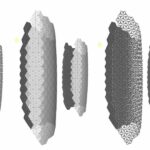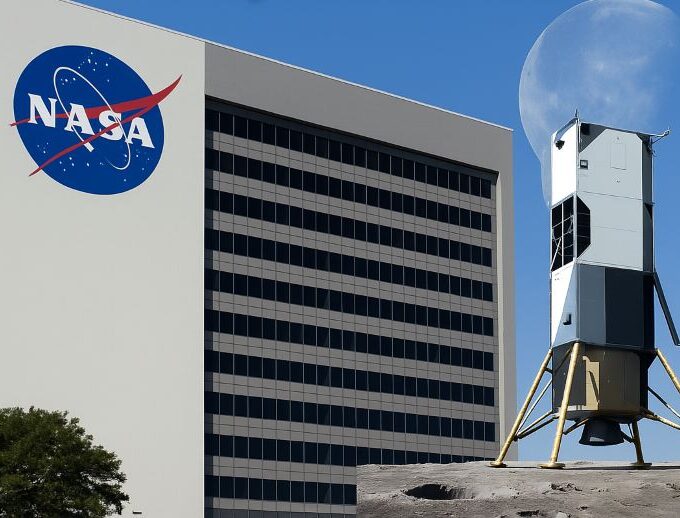The U.S. Navy recently officially launched the dismantling project of the nuclear-powered aircraft carrier USS Enterprise (CVN-65), the world’s first nuclear-powered aircraft carrier in service for more than half a century, will usher in the final chapter of its historical mission. The news, once confirmed, triggered widespread concern at home and abroad that the iconic battleship, which symbolized U.S. maritime hegemony during the Cold War, will soon come to a complete end.
Legendary Battleship Toward the End
“Officially commissioned in 1961, the USS Enterprise was the world’s first nuclear-powered aircraft carrier, ushering in a new era of carrier design and operation. During its service, the ship was involved in the Cuban Missile Crisis, the Vietnam War, the Gulf War and the Iraq War, and other major military operations, with a cumulative service time of 51 years, making it a “living fossil” in the U.S. Navy’s aircraft carrier fleet.
The ship was decommissioned in 2012 and has since been berthed at the Newport News shipyard awaiting disposal. Due to its use of 8 nuclear reactor drive, far more than the successor carrier 2 nuclear reactor configuration, its dismantling project in the technical and environmental requirements are extremely complex. The U.S. Navy has been on the dismantling plan for multiple evaluations and preparations, and finally announced this month that a shipyard in Washington State will formally undertake the dismantling work.
Technical Challenges and Cost Issues
According to the information released by the U.S. Navy, “Enterprise” dismantling project is expected to take 5 to 7 years, the total budget of more than 500 million U.S. dollars, mainly for the safe dismantling of nuclear reactors, radioactive materials, recycling of reusable metal structures, as well as the final dismantling of the hull. It is worth noting that this project is the first attempt in U.S. history to completely dismantle a nuclear-powered aircraft carrier. The previous “Long Beach” nuclear cruiser and other nuclear-powered warships, most of the “sealing” treatment, retaining the reactor hull after sealing, long-term docking in a special shipyard. The “Enterprise” will be completely dismantled, and is seen as a key pilot project for the U.S. to promote the development of disposal technology for nuclear-powered warships. Environmental groups have expressed concern, urging the Navy to provide maximum transparency during reactor handling and nuclear waste disposal to ensure there is no risk to the surrounding waters and the environment.
Historical Significance and Symbolic End
“The USS Enterprise is not only the beginning of nuclear carrier technology, but also carries the symbolism of the strategic power of the US Navy during the Cold War. The name “Enterprise” comes from a series of U.S. Navy ship names, which were used by a number of famous battleships during World War II. CVN-65, as the eighth generation of the USS Enterprise, was commissioned at the height of the Cold War, and became the U.S. military’s global CVN-65 was commissioned at the height of the Cold War as the eighth generation of the USS Enterprise. With the start of its dismantlement, it marks the formal retirement of early nuclear-powered ship technology. At the same time, the U.S. is moving forward with plans to build a new generation of nuclear-powered aircraft carriers that are more modern and efficient, such as the Gerald R. Ford-class aircraft carriers, which will be the mainstay of the U.S. Navy’s fleet for decades to come. Scholars of naval history note: “The dismantling of Enterprise symbolizes the end of a generation of nuclear carriers and heralds a new phase of technological and strategic thinking.” The ship flew more than 25 overseas deployments during her service career and carries the memories of many generations of Navy officers and men.

Implications for the Global Military
“The dismantling of USS Enterprise is not only a physical “scrapping,” it is also symbolic at the international strategic level. At a time when the number of aircraft carriers in the world continues to grow and regional military competition intensifies, the U.S. has chosen to dispose of a decommissioned aircraft carrier in a high-profile manner, not only for safety and environmental protection considerations, but also to show that the U.S. military fleet is determined to renew and upgrade itself, and to say goodbye to the old era. At the same time, China, India and other countries are also stepping up their own aircraft carrier program. In particular, China’s third domestic aircraft carrier “Fujian” has entered the pilot stage, is considered to be directly after the U.S. Army Ford-class aircraft carriers on behalf of the work. According to expert analysis, the U.S. decision to dismantle the USS Enterprise will have far-reaching consequences on a “symbolic level”, although it will not affect the pattern of its strength.
Looking Ahead: A New USS Enterprise in the Works
While CVN-65 will soon pass into history, the U.S. Navy has announced as early as 2022 that the fifth carrier in the Ford-class series, CVN-80, will continue to carry the name Enterprise and is expected to enter service in the early 2030s. The new Enterprise will be one of the most advanced versions of the Ford class, with a more advanced electromagnetic ejection system (EMALS), an enhanced radar system, and a more optimized crew configuration. This “name inheritance” also means that the U.S. military has not given up on the continuation of the historical spirit of the USS Enterprise, but will repackage it with new technologies and strategies to continue to assume the role of maritime hegemony.
Conclusion
With the formal dismantling of the USS Enterprise, the U.S. Navy has ushered in the end of an era. From its birth to its decommissioning, the carrier has witnessed the U.S. military’s transition from the height of the Cold War to the War on Terror. In the future, it may only exist as a museum exhibit such as the bridge and anchor chain, but the technological breakthroughs and strategic symbols it represents will continue on a new generation of ships.













Leave a comment